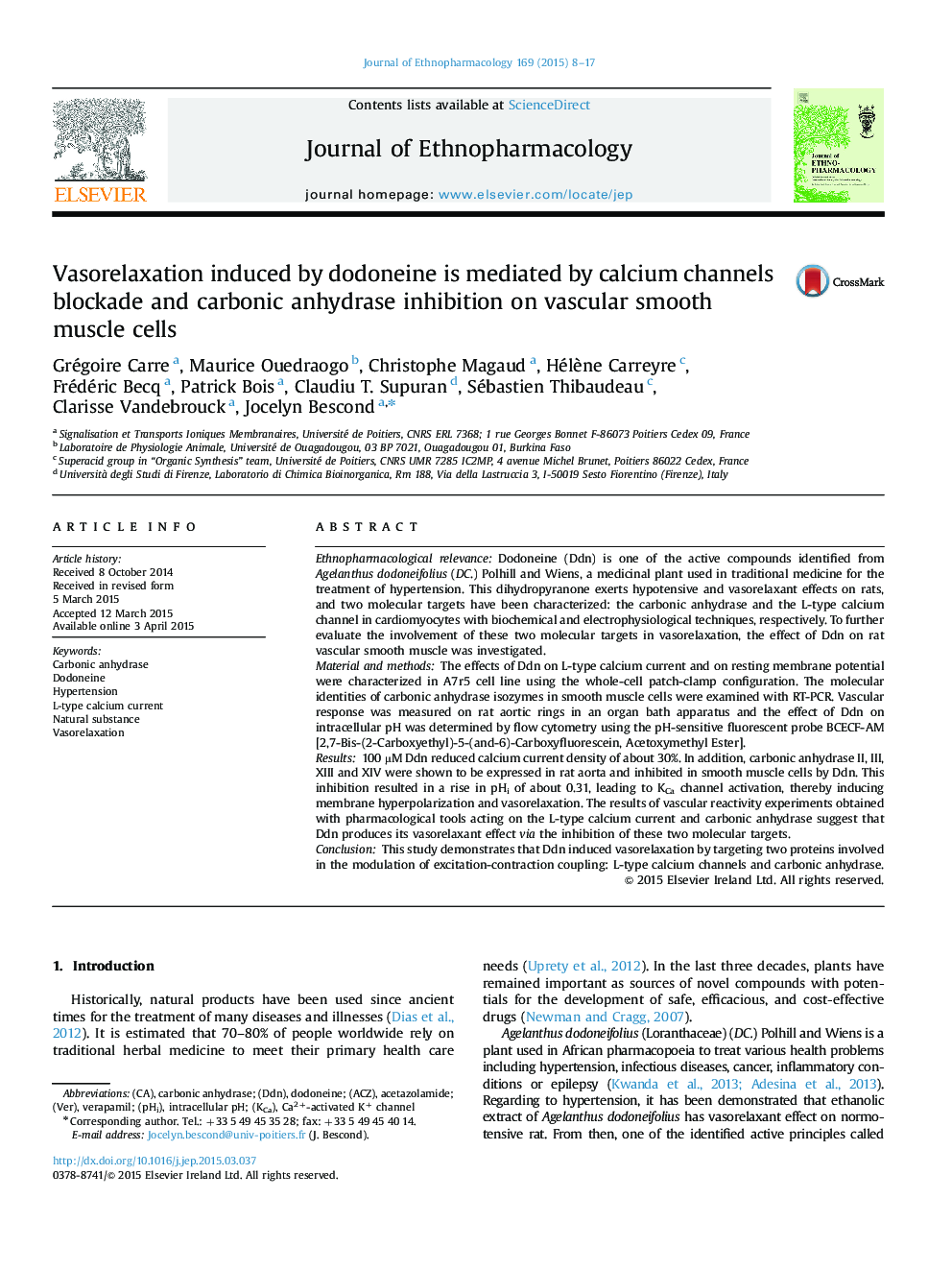| کد مقاله | کد نشریه | سال انتشار | مقاله انگلیسی | نسخه تمام متن |
|---|---|---|---|---|
| 2544964 | 1560393 | 2015 | 10 صفحه PDF | دانلود رایگان |

Ethnopharmacological relevanceDodoneine (Ddn) is one of the active compounds identified from Agelanthus dodoneifolius (DC.) Polhill and Wiens, a medicinal plant used in traditional medicine for the treatment of hypertension. This dihydropyranone exerts hypotensive and vasorelaxant effects on rats, and two molecular targets have been characterized: the carbonic anhydrase and the L-type calcium channel in cardiomyocytes with biochemical and electrophysiological techniques, respectively. To further evaluate the involvement of these two molecular targets in vasorelaxation, the effect of Ddn on rat vascular smooth muscle was investigated.Material and methodsThe effects of Ddn on L-type calcium current and on resting membrane potential were characterized in A7r5 cell line using the whole-cell patch-clamp configuration. The molecular identities of carbonic anhydrase isozymes in smooth muscle cells were examined with RT-PCR. Vascular response was measured on rat aortic rings in an organ bath apparatus and the effect of Ddn on intracellular pH was determined by flow cytometry using the pH-sensitive fluorescent probe BCECF-AM [2,7-Bis-(2-Carboxyethyl)-5-(and-6)-Carboxyfluorescein, Acetoxymethyl Ester].Results100 µM Ddn reduced calcium current density of about 30%. In addition, carbonic anhydrase II, III, XIII and XIV were shown to be expressed in rat aorta and inhibited in smooth muscle cells by Ddn. This inhibition resulted in a rise in pHi of about 0.31, leading to KCa channel activation, thereby inducing membrane hyperpolarization and vasorelaxation. The results of vascular reactivity experiments obtained with pharmacological tools acting on the L-type calcium current and carbonic anhydrase suggest that Ddn produces its vasorelaxant effect via the inhibition of these two molecular targets.ConclusionThis study demonstrates that Ddn induced vasorelaxation by targeting two proteins involved in the modulation of excitation-contraction coupling: L-type calcium channels and carbonic anhydrase.
The inhibition of carbonic anhydrase and L-type calcium current by dodoneine induces vasorelaxation by different intracellular pathways.Figure optionsDownload high-quality image (158 K)Download as PowerPoint slide
Journal: Journal of Ethnopharmacology - Volume 169, 1 July 2015, Pages 8–17